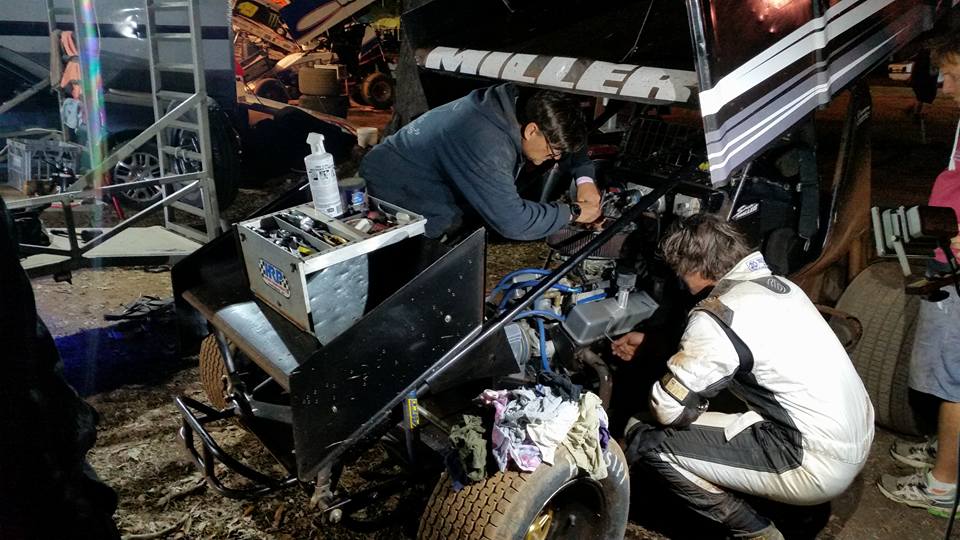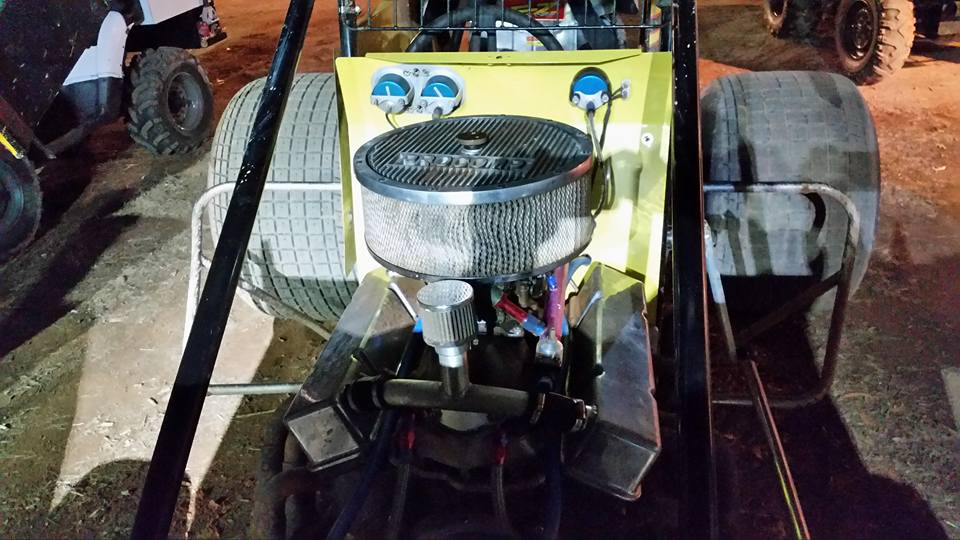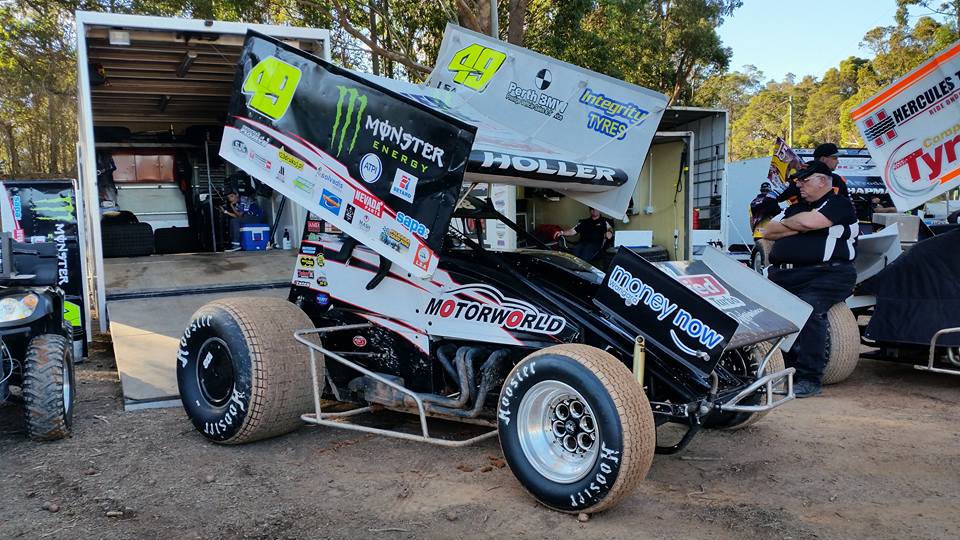
Limited Sprintcars run a V8 engine and are constructed from tubular frame chassis. Within this chassis located just in front of the rear wheels is the driving position. The driver cockpit is provided with minimal instrumentation and usually only consists of an oil pressure gauge and a water temperature gauge.

Besides the obvious requirement for a steering wheel, the driver controls are limited to an accelerator and a brake. There is no soft clutch or driver selectable gears. The vehicle driveline is only fitted with a "dog clutch" which enables a go or no-go option.
These vehicles generally run a hydraulic power assisted steering system; with the steering hydraulic pump being mechanically driven off the engine.
Limited Sprint cars minimum weight is 1625 Lbs (738kgs), as you can imagine weight can pay an important part of being competitive so considerable work is done by the vehicle builders to keep as close as possible to this weight.
Australian limited sprint car engines are restricted to 361 cubic inches with the most popular engine in use being the Chev small block 350 cubic inch engine.
Sprint car engines are naturally aspirated carburetor engines fueled with methanol, which provides a higher octane rating of 113 compared to 98 octane being the highest available octane fuel at public service stations in Australia.

As this higher-octane fuel will provide better resistance to detonation the sprint car engines can run higher compression ratios and thus produce more power from the same size engine.
The fuel tank is mounted at the rear of the vehicle and is generally constructed from plastic with an internal safety bladder.
The sprint car wheels are more important to the racing than one would first think. The vehicle can be setup to suit each track surface and conditions using a variety of tyre diameter and widths (front to rear and left to right) and by running different air pressures on all tyres to best suit each days racing.
Tyre pressures can vary between 3 PSI and 10 PSI, with the inside tyre (left) generally having the lower pressure as this tyre has reduced weight on it while racing due to the continual left turning of the vehicle.
In the early 1970s, many sprint car drivers began to put wings with sideboards on both the front and top of their cars. The added wings increased the down force generated on the car, with the sideboards helping to turn the car in the corners. This makes the car easier to control.
The wings are adjustable with increased angles increasing the down force on the vehicle which increases traction and stability but also has the negative effect of also increasing drag and thus reducing the potential top speed of the vehicle, so it's a balancing act to get the best settings for each track.

To provide some safety to the drivers the following key items are built into the vehicle or worn by the driver.
Fire resistant clothing, including underwear, gloves, boots and balaclava.
A 5-point safety harness
Arm restraints to prevent the driver's arms going outside the roll cage.
Head and neck restraints are now used and trusted by major motor sport organisations worldwide. They have been mandatory in Australian Sprintcar competition since 2004. Only SFI 38.1 (approved by the SFI Foundation) head and neck restraints will be allowed.
In car communications are now compulsory as well - this allows race stewards/marshalls, etc to communicate with drivers in relations to the race. These are one-way communicators, so you cant answer back!
Full-face helmet, usually fitted with clear vision tear-off's in an attempt to maintain visibility with all the mud and dust from the race. Additionally, helmet restraints are sometimes used to help offset the forces of the constant left hand turning vehicle during longer races.
If your after further information regarding "Limited Sprint Car" racing please don't hesitate to contacts us at driver@limitedsprintcars.com.au anytime with your questions.